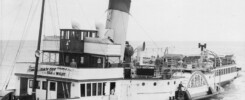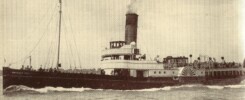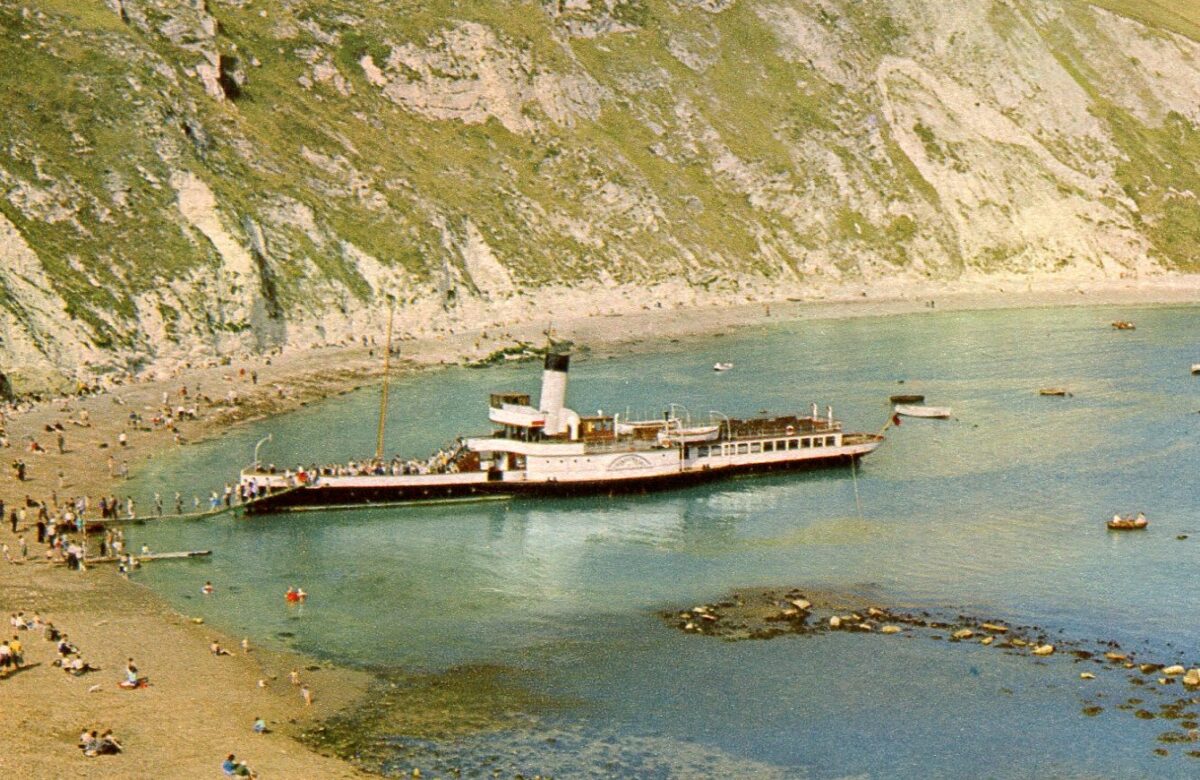
On Monday 30th July 1962 I took my Auntie Mary, my Dad’s sister, for the morning cruise on Consul leaving Weymouth at 10.30am due back 12.30pm. She had a passing interest in paddle steamers having made her first trip on one aboard Bilsdale in Scarborough aged 9 in 1928. She was staying with us that week and was quite happy to be dragged along by me for yet another paddle steamer ride.
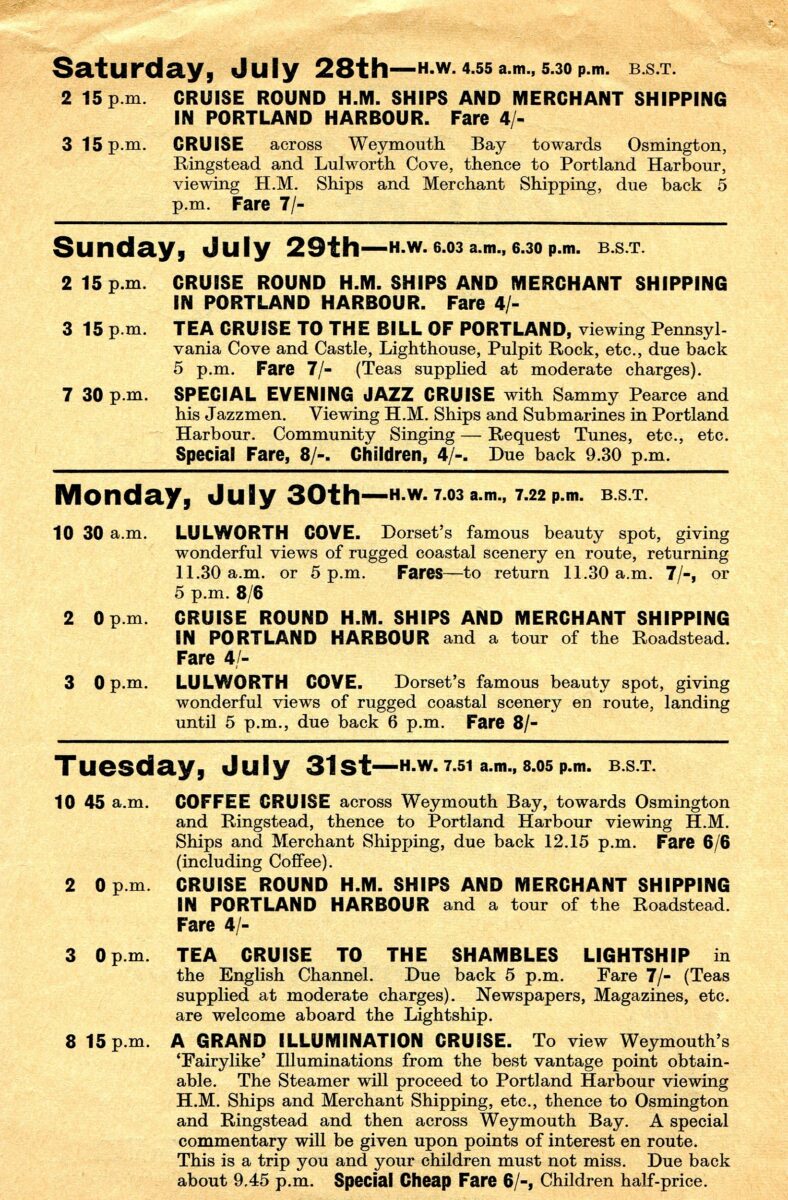
Following issues with her hull at the last survey in March the Board of Trade issued Consul with a limited Passenger Certificate for 1962 restricting her to sailing only within an area bounded by Lulworth Cove in the east and Portland Bill in the west. So for this summer there were no day trips from Weymouth to Swanage and Bournemouth or Swanage and Totland Bay, Isle of Wight.
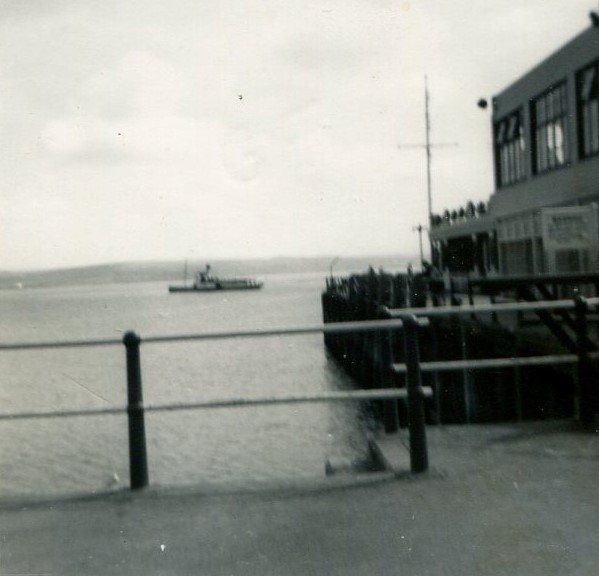
When we got down to the Pleasure Pier shortly after 10am for the 10.30am departure I was surprised to see Consul turning out in the bay and then backing up to the Pleasure Pier to berth port side to, head out, a manoeuvre I had not seen before as usually she berthed starboard side to, head in.
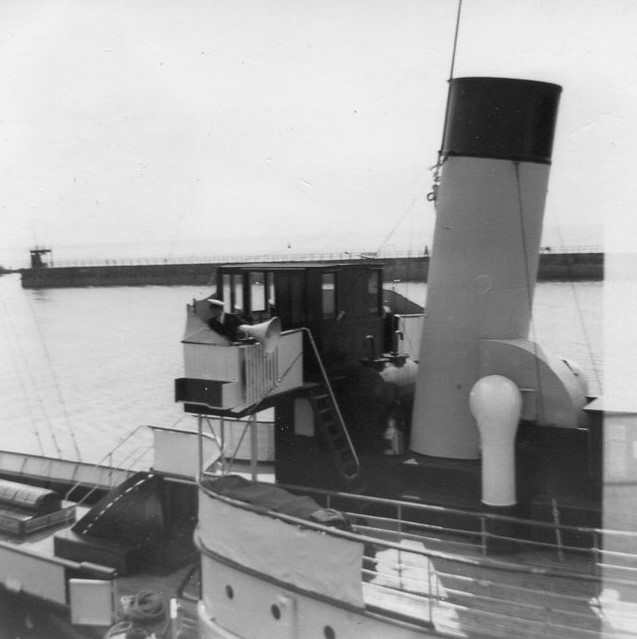
I got to know Capt Iliffe, her master that summer, quite well in later years and asked him about this. He replied that he had recently been on holiday in Switzerland, had seen some of the Swiss paddle steamers doing this on Lake Geneva and thought that he would have a go with it on Consul at Weymouth.
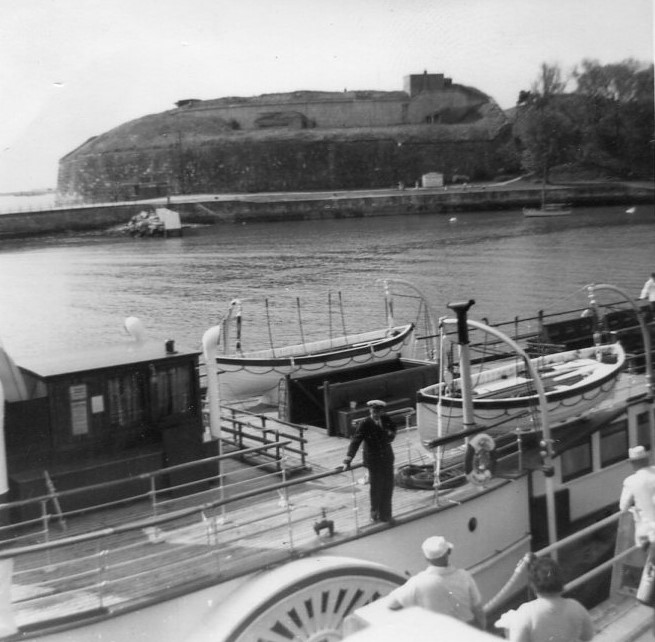
The manoeuvre did not go entirely according to plan as the positions of the mooring bollards on the pier and the gangway access in the pier railings did not marry up that well for Consul when berthed this way round. I recall mate Arthur Drage shouting up to Capt Iliffe that he needed to go back a bit so ring for “slow astern”. Capt Iliffe replied that he couldn’t do that as he had already rung “Finished with Engines”.
Sure enough shortly after this picture was taken Chief Engineer Cyril Julian emerged on deck up the companionway to see what was going on. Eventually the head rope was re-routed round one of the pier piles and that was used to haul Consul astern a bit and alongside. The gangway went out and Auntie Mary and I went aboard along with about 75 other passengers.
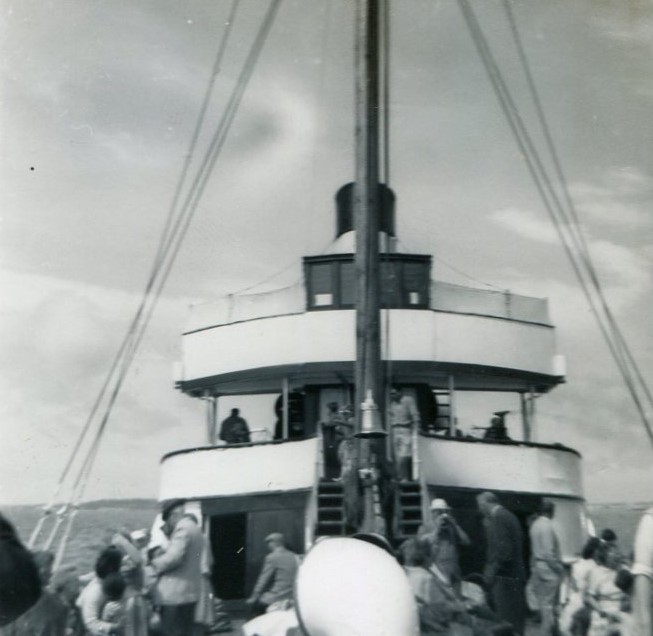
Consul left on time at 10.30am and came round onto a heading of 085 degrees for the 7 nautical mile run along the lovely Dorset Coast passing Osmington, White Nothe, Durdle Door, the Bull, the Cow and the Calf and on to Lulworth Cove. We entered the Cove at about 11.20am to put the bow up onto the beach and unload any passengers going ashore over a large structure on wheels which was pushed down into the water to marry up with Consul’s port bow.
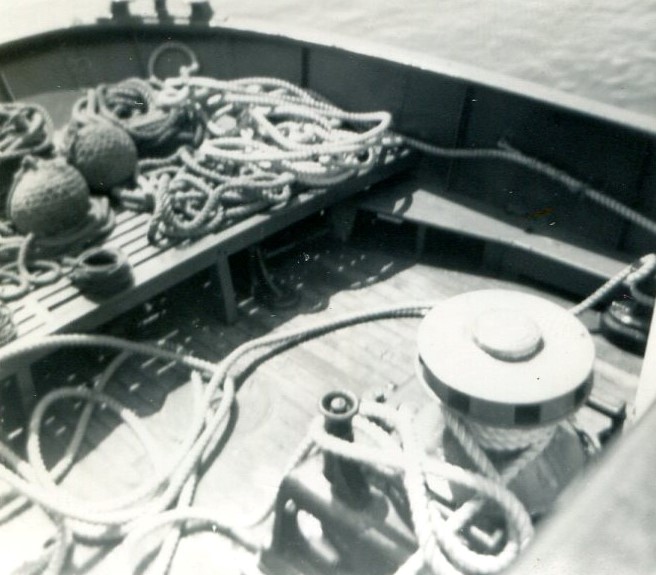
Putting the bow onto the Devon beaches before the War had involved dropping a kedge anchor over the stern as the steamer came in but here at Lulworth Cove there were moorings which were taken up to steady the stern. A small boat was always in attendance and it passed over the moorings, which were attached to anchors already laid on the bottom, first on the upwind side which was usually the port side and then the starboard side. By hauling these ropes in one at a time on the aft capstan Consul’s stern became securely moored.
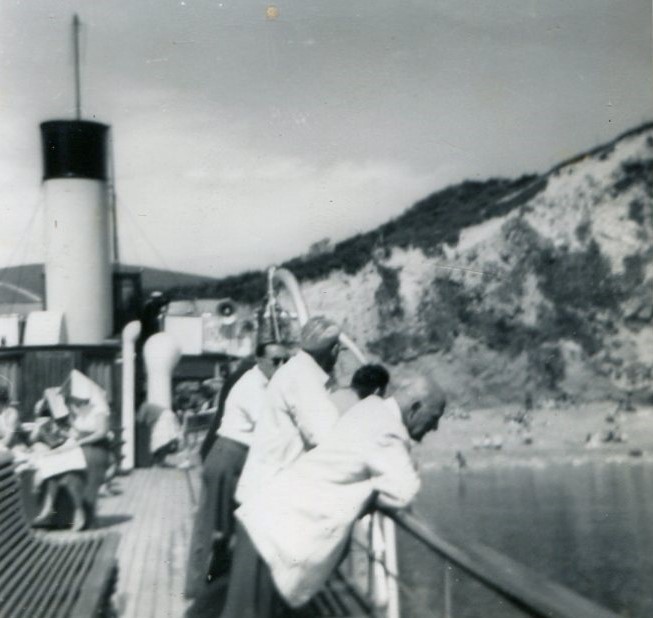
Most of the passengers went ashore to make a day of it with a return on the afternoon cruise leaving Lulworth at 5pm but a few, including Auntie Mary and me, stayed aboard.
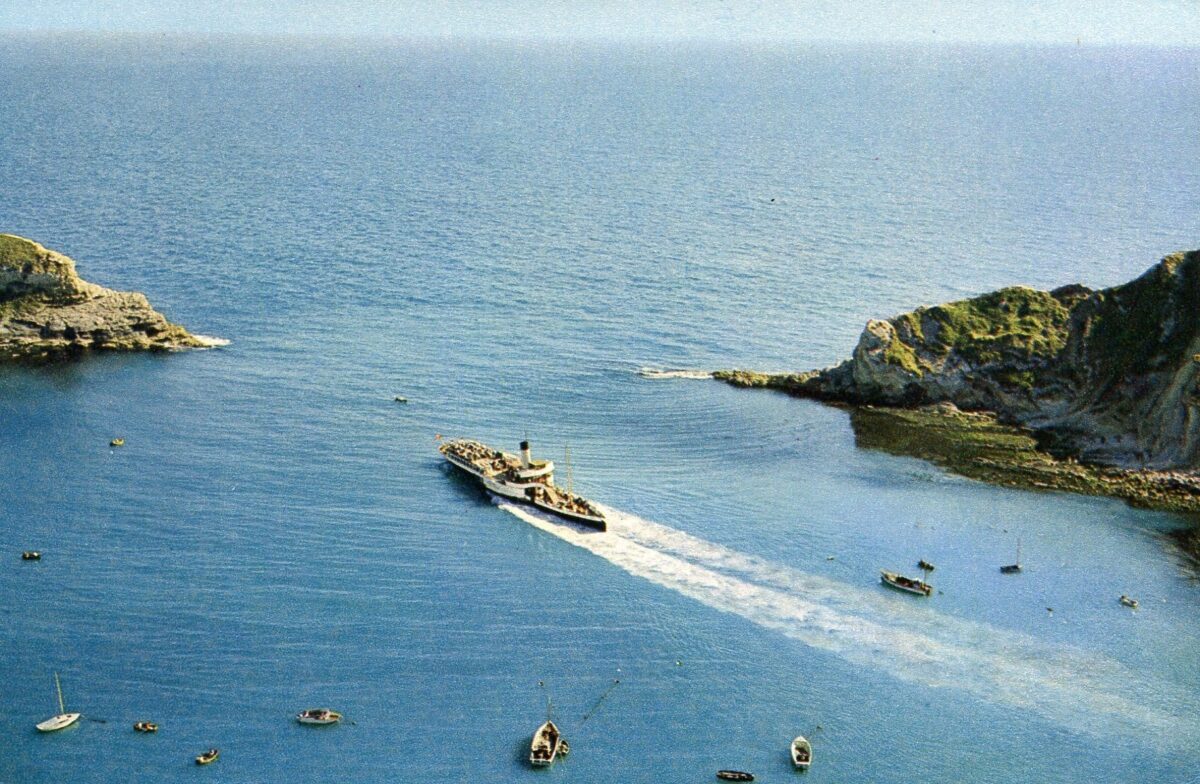
Backing out of Lulworth Cove was sometimes easier said than done. The mooring on the starboard side was let go first. “Heave away” was signalled on the docking telegraph to start to haul in the mooring on the port side to pull the stern more up in the direction of Cove entrance. Then “Let Go” was rung and the engine put on “Full Astern” to start to get some way on the ship so that she would steer.
As you can see in this picture it was a bit of a banana shape to make up for the entrance rather than a straight line and sometimes it did not go so well. There were occasions when Consul had to stop and go ahead within the Cove to try to swing the stern onto a better angle to make her exit. I remember one occasion in 1964 when it went so badly wrong that Consul ended up having to turn round in the Cove and came out head first which was the only occasion I ever saw her do that.
In this picture you can see a small boat getting in the way astern. That must have been a bit of a heart stopping moment for Capt iliffe because as all paddle steamer captains know being stopped in a difficult position is not ideal as you have no way of manoeuvring the ship until you have some way on again. When stopped you are a bit at the mercy of the wind and tide and what they do to you.
Monday 30th July 1962 was a lovely day. The sun shone and there were just light airs. However, getting Consul lined up on the right angle for her exit proved difficult. As I often did, I was down watching the engineer handling the engine and I recall far more “Slow Aheads” and “Slow Asterns” than was usual. I also remember hearing a loud bang and going on deck saw that Consul had knocked over the large landing structure on wheels which was now on its side.
High water on this day was at 7.03am so at 11.30am it was pretty much low tide at Lulworth Cove. As you may know, where for example Southampton has a double high water, Weymouth bizarrely has a double low tide, a feature known locally as Gulder. When the tide goes out, it first comes back in just a tiny tad, hovers like than for a while and then goes back out again before coming in properly. This gives Weymouth, and this part of the Dorset Coast, an extended period of low water.
Eventually we backed out OK and came round on a heading of 265 degrees for the 7 nautical mile run back to Weymouth where we berthed starboard side to head in at 12.30pm. On the way back we passed one of Cosens’ small harbour launches outward bound for Lulworth Cove to assist in putting the landing structure back to an upright position again for Consul’s afternoon call.
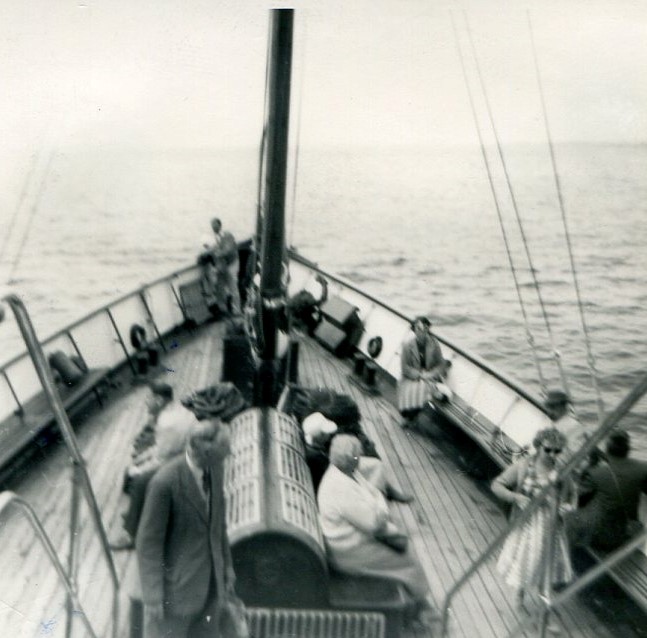
As you can see in this picture, over her forward saloon Consul had a wonderful domed Victorian skylight which flooded daylight into the bar below where barman George Morris presided over the drinks. Consul was built in 1896 and I think that George Morris was of a similar vintage. At least he looked elderly to my young eyes with his magnificent Victorian style handle-bar moustache giving him the appearance of coming from another and rather grander age. The forward saloon had moquette seats either side and a rather musty smell to it even with some of the windows in the domed skylight open above it.
My Auntie Mary is the lady furthest forward on the starboard side sitting down. Also right up the bow you can see some steps which were used by the passengers to ascend onto the landing structure at Lulworth.
We arrived back at Weymouth at 12.30pm where Consul would lie until the 2pm departure for the one hour trip round Portland Harbour and her return to Lulworth Cove again at 3pm.
We walked up the Pleasure Pier to go home for lunch behind Curly Yates, Consul’s greaser, who was making his way up to take his lunch break in the public bar of the Edward Hotel.
Although there is no service to Lulworth Cove these days, loading and unloading passengers over the bow continues on the Devon Coast to this day where Stuart Line’s Pride of Exmouth is specially fitted with a bow gangway to carry on this paddle steamer tradition of yesteryear.
Kingswear Castle returned to service in 2023 after the first part of a major rebuild which is designed to set her up for the next 25 years running on the River Dart. The Paddle Steamer Kingswear Castle Trust is now fund raising for the second phase of the rebuild. You can read more about the rebuilds and how you can help if you can here.
John Megoran
This article was first published on 30th July 2021.

